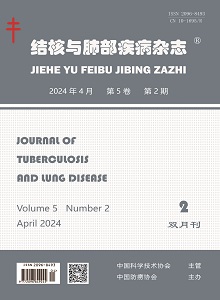Objective To investigate the values of different detection indicators in early screening for pleural adhesion in patients with tuberculous pleurisy.Methods From March 2015 to March 2017 in the Third People’s Hospital of Shenzhen, 134 patients with tuberculous pleurisy who had been diagnosed for more than one month but were not treated with standardized anti-tuberculosis drugs were included in this study. Patients were divided in the adhesion group (n=102) and non-adhesion group (n=32) according to the occurrence of pleural adhesions or not. Routine biochemical tests (including detection of adenosine deaminase (ADA), lactate dehydrogenase (LDH), and percentage of monocytes (MONO%)), C-reactive protein (CPR) determination, erythrocyte sedimentation rate (ESR) determination, and enzyme-linked immunospot assay (ELISPOT) were conducted for the pleural effusions and peripheral blood. Pleural effusion thickness and pleural thickness were measured by CT scan and were scored. The correlations between various indicators and pleural adhesion in patients with tuberculous pleurisy were analyzed by using SPSS 17.0, and the receiver operating characteristic (ROC) curve analyses for the significant indicators were analyzed by Graphpad software.Results There were no statistical significances in the levels of MONO%, CRP, ESR, pleural adhesion score by CT, pleural effusion thickness, pleural thickness, PBMC-ELISPOT-E6, PBMC-ELISPOT-peptide, PFMC-ELISPOT-E6, and PFMC-ELISPOT-peptide between the patients in the adhesion group ((68.36±30.72)%, (51.21±34.95) mg/L, (52.37±28.44) mm/1h, (6.76±6.03) points, (33.50±16.65) mm, (4.70±3.70) mm, (59.87±48.94) SFCs/well), (72.37±72.40) SFCs/well, (244.20±28.70) SFCs/well, and (242.00±134.20) SFCs/well) and non-adhesion group ((83.37±12.63)%, (58.36±47.66) mg/L, (54.36±29.92) mm/1h, (5.07±5.47) points, (28.85±21.30) mm, (3.60±3.00) mm, (60.71±64.52) SFCs/well, (44.80±52.39) SFCs/well, (203.10±174.70) SFCs/well, and (203.10±174.70) SFCs/well) (t=1.882, P=0.067; t=0.520, P=0.604; t=0.511, P=0.826; t=0.943, P=0.352; t=2.352, P=0.022; t=0.584, P=0.571; t=0.400, P=0.691; t=1.310, P=0.197; t=0.914, P=0.373; and t=0.720, P=0.372, respectively). The ADA ((78.49±24.42) U/L) and LDH ((613.40±172.20) U/L) levels in the adhesion group were higher than those in the non-adhesion group (49.64±18.98) U/L and (348.80±131.40) U/L) (t=24.981 and 22.590, P values <0.001). ROC curve analysis was performed on the ADA and LDH values. The area under the curve (95%CI), sensitivity, and specificity of ADA and LDH levels in diagnosing pleural adhesion in patients with tuberculous pleurisy were 0.84 (0.76-0.93) and 0.89 (0.82-0.96), 81.30% and 81.82%, and 84.35% and 73.68%.Conclusion The levels of ADA and LDH in pleural effusion of patients with tuberculous pleurisy are significantly different in the non-adhesion group and the adhesion group, and can be used as important indicators to predict the occurrence of pleural adhesion in the late stage of tuberculous pleurisy.

 Wechat
Wechat